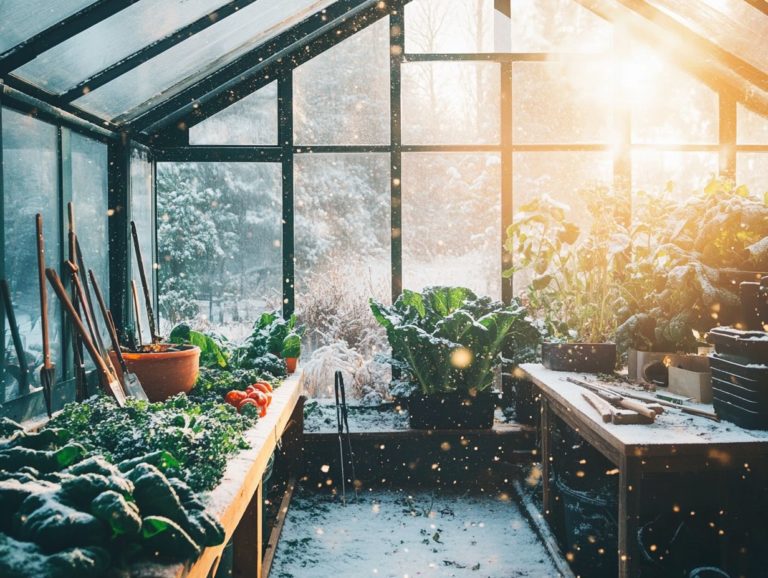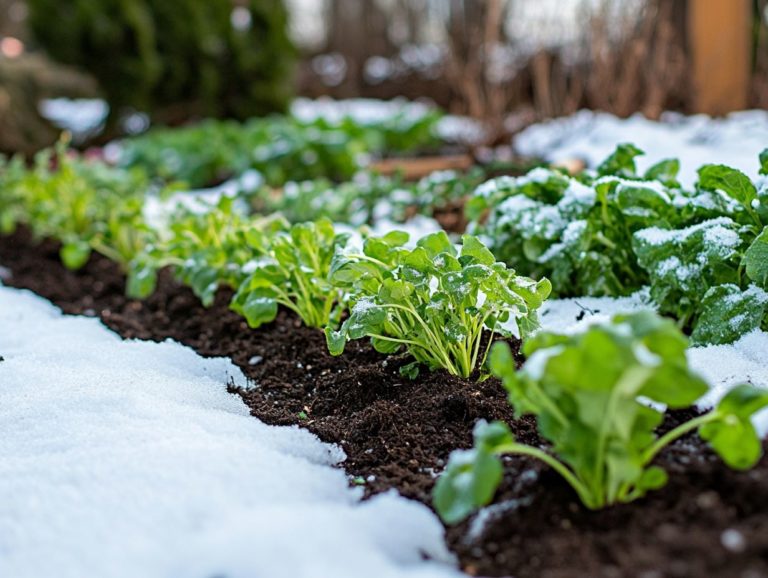Understanding the Science of Cold-Weather Plants
Cold-weather plants are essential for maintaining biodiversity and enhancing landscapes, even as temperatures dip. These plants include unique adaptations to cope with freezing temperatures.
These resilient species possess specific characteristics that allow them to flourish in cold environments. By delving into their survival strategies, you can enrich your winter gardening practices and deepen your environmental awareness.
Get ready to discover the incredible world of cold-weather plants! This article will highlight their benefits, provide essential care tips, and dispel common misconceptions.
Contents
Key Takeaways:
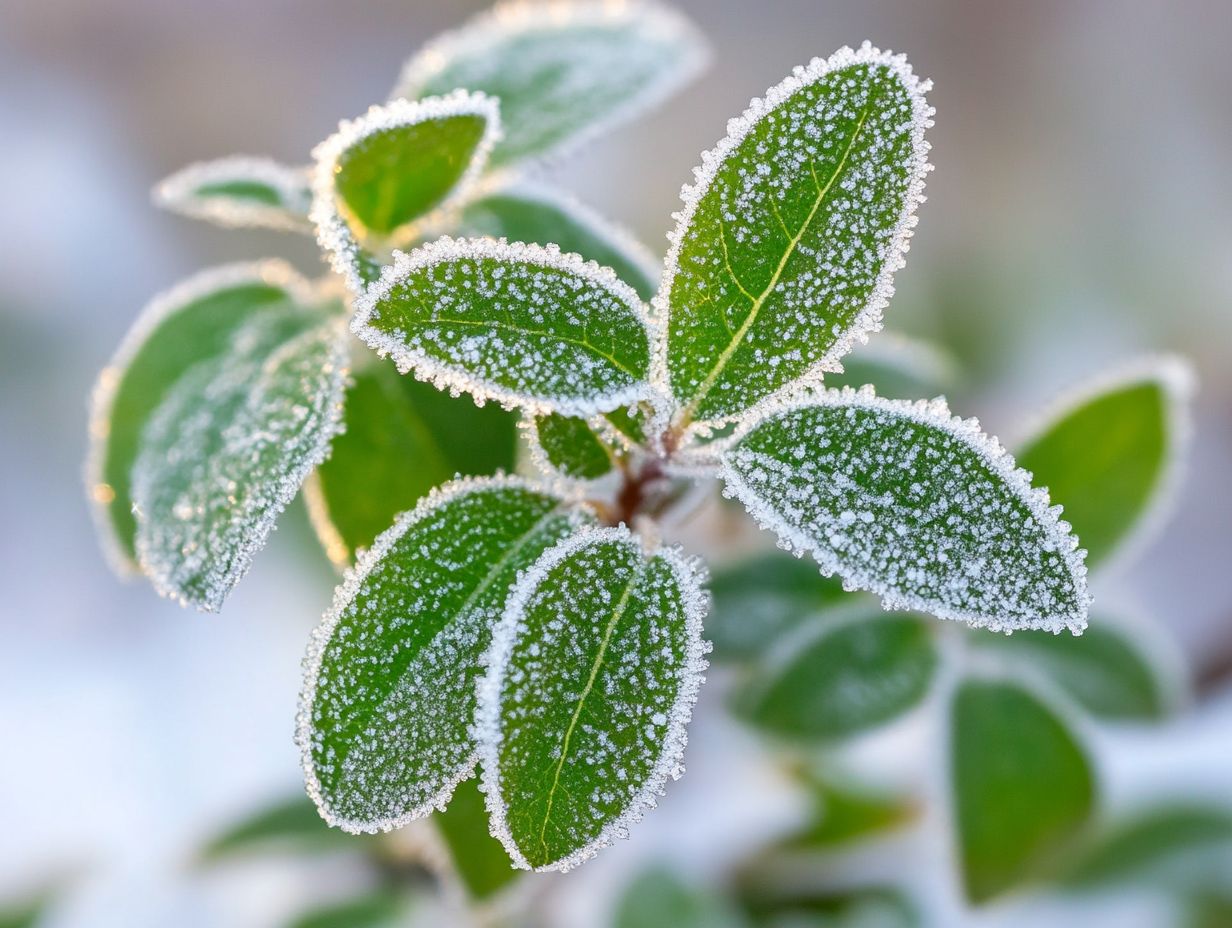
- Cold-weather plants have specific characteristics that make them suitable for surviving in harsh winter conditions.
- These plants have unique adaptations such as deep roots, protective coverings, and a winter resting phase to help them survive in cold weather.
- Caring for cold-weather plants can have environmental and health benefits, particularly when cultivating winter vegetables. Proper maintenance is essential for their growth and survival.
Cold-Weather Plants: Definition and Characteristics
Cold-weather plants are truly remarkable, showcasing traits that empower them to flourish in the harshest environments marked by winter hardiness and frigid temperatures.
Among these resilient species are hardy annuals and biennials, each equipped with distinct physiological adaptations that allow them to endure extreme cold and recover from potential frost damage.
By understanding the characteristics of these plants, you can elevate your winter gardening practices and develop effective plant survival strategies. This ultimately contributes to the preservation of biodiversity even in the chilliest climates.
What Makes a Plant Suitable for Cold Weather?
Several factors determine a plant’s ability to thrive in cold weather: cold tolerance, genetic adaptability, and specific structural changes during the winter resting phase.
These traits enable certain species to withstand brutal winter conditions while minimizing frost damage. The genetic responses of these resilient plants often include the production of antifreeze proteins, which inhibit the formation of ice crystals within their cells. During the winter resting phase, metabolic inactivity becomes vital, conserving energy and preventing cellular processes, such as leaf abscission, that could result in injury from freezing temperatures.
Such adaptations boost survival rates and facilitate quicker recovery and growth when favorable conditions return. This showcases the remarkable capacity of these plants to flourish despite environmental challenges.
Adaptations of Cold-Weather Plants
Cold-weather plants have developed an impressive array of adaptations that enhance their cold hardiness, allowing them to thrive in unforgiving winter conditions.
Through intricate modifications in their water-conducting pathways and strategic structural changes, these remarkable plants bolster their resilience against freezing temperatures, ensuring their survival when the chill sets in.
Strategies for Surviving Harsh Winter Conditions
To navigate the challenges of harsh winter conditions, cold-weather plants utilize a variety of strategies. They optimize moisture availability while developing resistance to frostbite and frost burn essential for their growth and vitality during colder months.
These incredible adaptations include specialized leaf structures designed to minimize water loss and retain vital moisture, even amid frigid air. Many of these resilient plants produce antifreeze proteins, allowing them to endure freezing temperatures without damage.
Take winter vegetables like kale and Brussels sprouts; they store sugars that effectively lower the freezing point within their cells, providing extra protection against the elements. These strategies enable them to thrive throughout winter and remain a valuable resource for gardeners seeking fresh produce during off-seasons.
Conclusion
In summary, cold-weather plants are essential for biodiversity and offer unique adaptations that allow them to flourish in harsh conditions. By understanding their characteristics and survival strategies, you can enhance your winter gardening practices.
Start exploring these plants today and transform your winter garden!
Types of Cold-Weather Plants
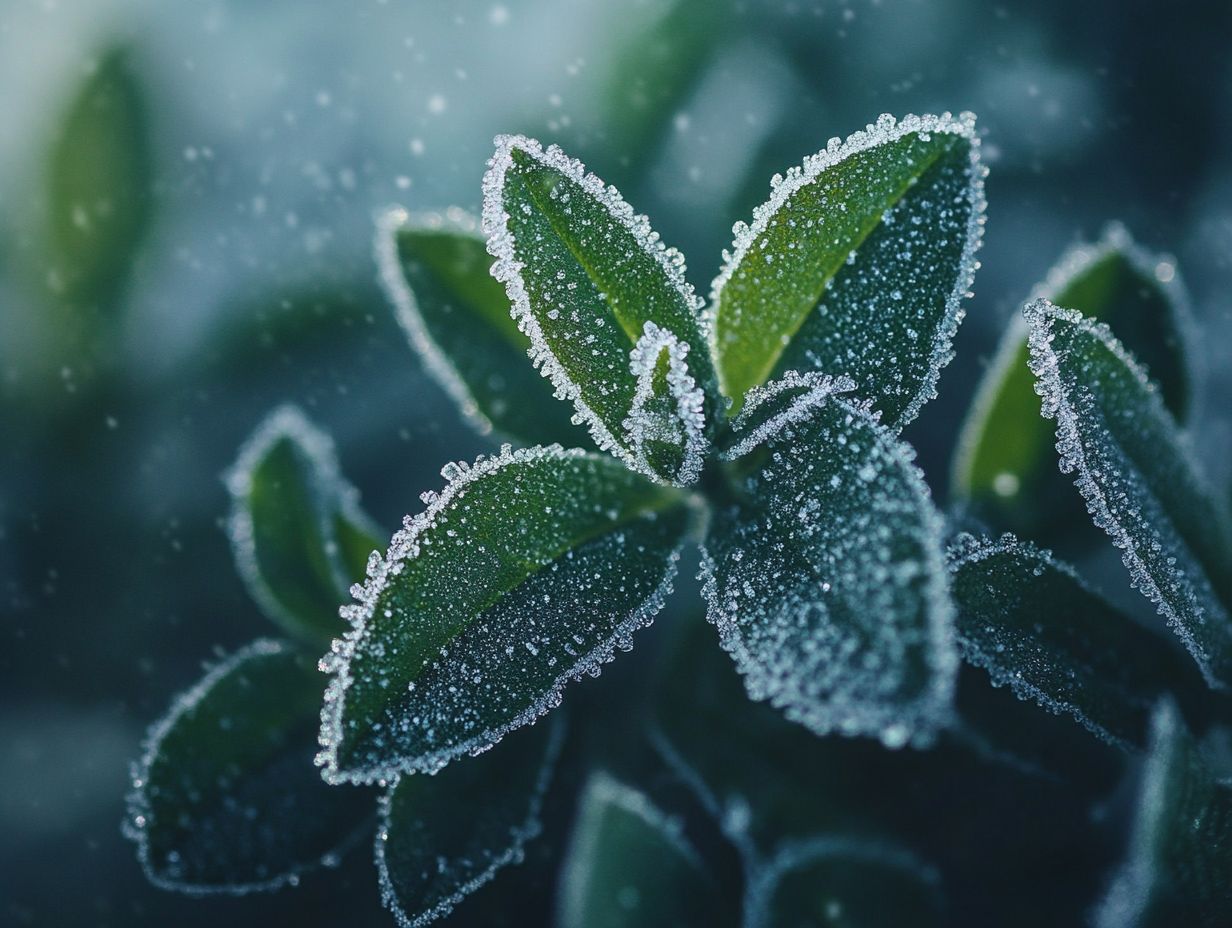
Cold-weather plants can be elegantly categorized into distinct types, including hardy annuals, biennials, and herbaceous perennials, which are plants that regrow each year and have soft stems. Each category boasts unique characteristics that allow them to flourish in frigid environments.
Consider the striking Icelandic poppies, the resilient scabiosa, and the charming nigella. All of these exemplify nature’s ingenuity in adapting to colder climates.
Examples and Characteristics of Different Species
Explore the remarkable array of cold-weather plants like Icelandic poppies, scabiosa, and nigella. These plants demonstrate diverse traits that make them perfectly suited for frosty climates.
In stark contrast to tender annuals that falter in freezing temperatures, these resilient species have evolved unique adaptations, such as thicker leaves and deeper roots, enabling them to thrive even beneath layers of snow.
Take Icelandic poppies, for example. They thrive in frost and often bloom early in the spring, infusing winter gardens with vibrant color. Scabiosa shows impressive resilience as it endures harsh winds and low light conditions.
Meanwhile, nigella not only withstands the chill but also plays a vital role by attracting essential pollinators during the fleeting warmer spells. Choosing the right cold-weather plants enhances your garden’s visual charm throughout winter while fulfilling an important ecological function.
Benefits of Cold-Weather Plants
Cold-weather plants enhance environmentally sustainable gardening practices and deliver a wealth of health benefits. They improve plant growth in small areas with different weather conditions and yield nutritious winter vegetables like kale and carrots that flourish in cooler conditions.
Embracing these hardy plants allows you to cultivate a garden that not only thrives but also supports your well-being during the chillier months.
Environmental and Health Benefits
The environmental benefits of cold-weather plants are impressive. They enrich biodiversity and soil health while promoting plant growth and moisture availability, especially during the winter months when other plants may struggle.
These resilient varieties create a dynamic ecosystem by offering habitats and food sources for various pollinators and beneficial insects. They support natural biodiversity and improve soil structure, aerating the ground and facilitating better water infiltration.
This process aids in moisture retention, making nutrients more accessible to other plants and significantly reducing soil erosion. Moreover, winter vegetables like kale and carrots thrive in colder temperatures and contribute organic matter to the soil upon decomposition, further enhancing its health and fertility.
Caring for Cold-Weather Plants
Caring for cold-weather plants is an exciting challenge! You’ll want to equip yourself with effective tips for growing, strategic maintenance approaches, and methods to mitigate frost damage.
This knowledge is essential for ensuring your plants remain healthy and productive throughout the colder months.
Tips for Growing and Maintaining Cold-Weather Plants
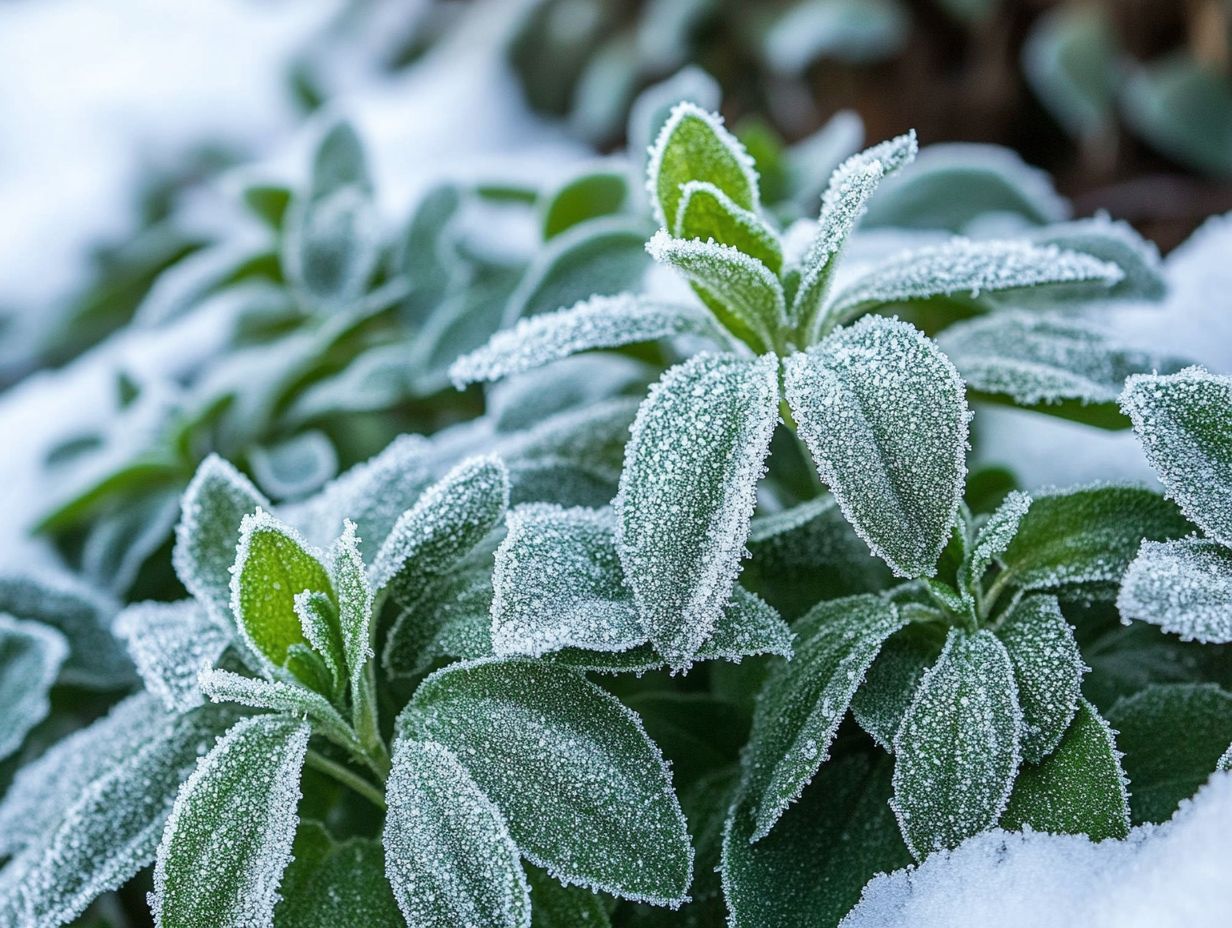
To grow and maintain cold-weather plants effectively, you ll want to embrace strategies that combat frost damage and prevent moisture stress both are vital for the well-being of winter vegetables and other cold-hardy species.
Selecting varieties that thrive in low temperatures can significantly boost your chances of a bountiful harvest. Utilize protective measures like row covers and mulching to insulate soil and plants, minimizing the risk of frost damage.
Paying close attention to soil moisture levels is equally important, especially since winter can bring unpredictable precipitation. Regularly checking moisture content ensures your plants receive the right amount of hydration without becoming waterlogged, which could lead to root rot.
Act now to protect your winter crops! By implementing these practices, you can maintain a vibrant garden even through the chillier months.
Common Misconceptions about Cold-Weather Plants
You may encounter several common misconceptions about cold-weather plants, particularly the notion that all plants can withstand harsh winters. Understanding the key differences between cold hardiness and tender plants is crucial for a thriving garden.
Recognizing these differences will help you make informed choices for your garden.
Dispelling Myths and Clarifying Facts
Dispelling myths about cold-weather plants requires clarifying the facts surrounding their cold hardiness and the risks of frost damage. These factors greatly influence their survival and overall health, especially under changing climate conditions.
One prevalent misconception is that all cold-weather plants can endure any level of frost without consequence, particularly when considering the genetic adaptability of different species. While many of these plants are bred for resilience, their tolerances vary based on specific conditions like soil type and moisture levels.
For example, certain perennials may flourish in lower temperatures, yet a sudden drop could still inflict frost damage. By understanding the true cold hardiness zones, you empower yourself to make informed choices, allowing you to cultivate environments that minimize vulnerabilities.
Don t underestimate even a slight frost it can significantly harm your plants and garden. Even minor frosts can impede growth and flowering, ultimately affecting your garden s beauty and balance.
Frequently Asked Questions
What are cold-weather plants?
Cold-weather plants can withstand and thrive in colder temperatures, typically below freezing. They have adapted to survive in harsh winter conditions and continue to grow and reproduce during this time.
What is the science behind cold-weather plants?
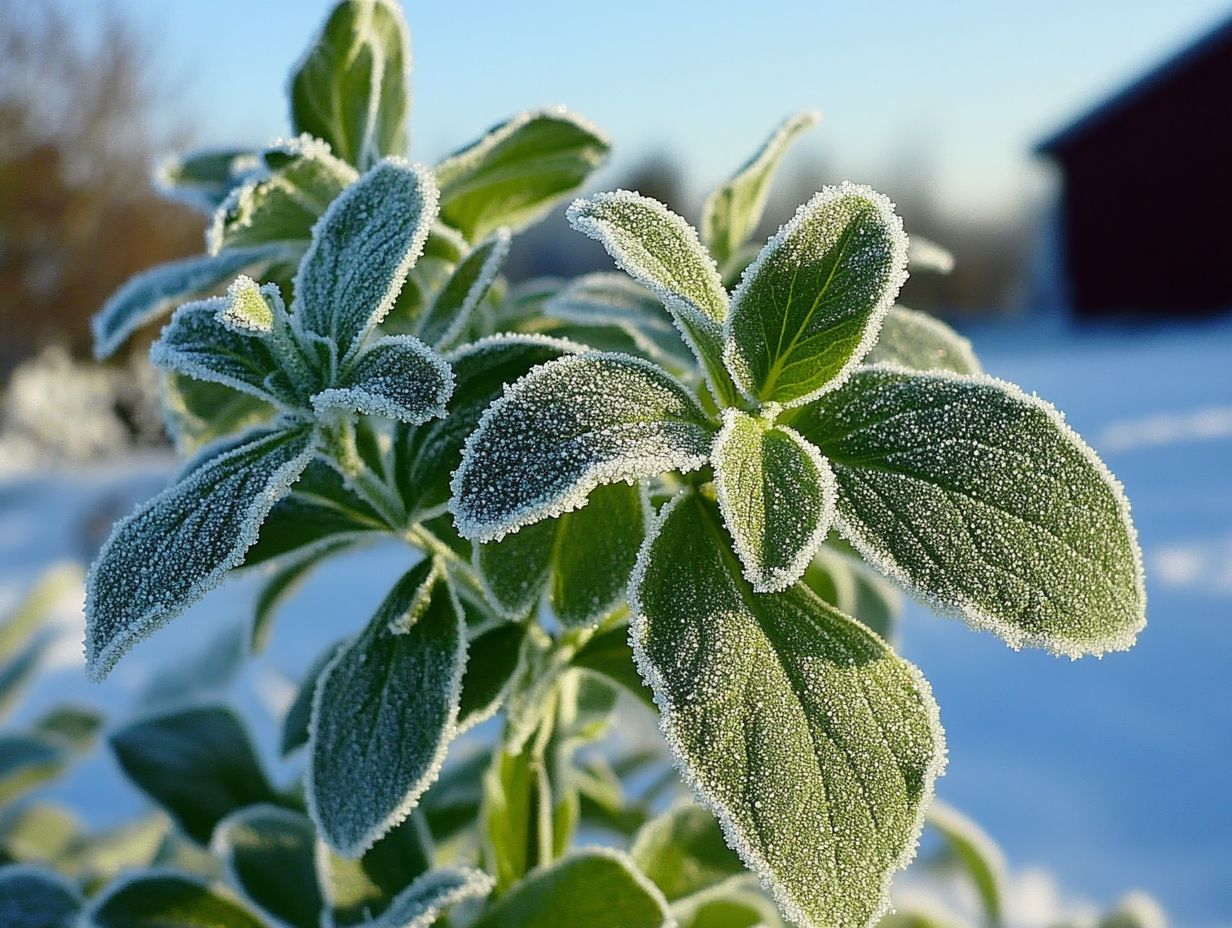
The science behind cold-weather plants involves their ability to adapt to low temperatures, as well as their physical and chemical changes that help them survive in harsh winter conditions.
How do cold-weather plants differ from warm-weather plants?
Cold-weather plants have evolved to withstand freezing temperatures and shorter growing seasons, while warm-weather plants thrive in longer growing seasons and cannot survive in freezing temperatures.
What are some examples of cold-weather plants?
Examples of cold-weather plants include evergreens, shrubs, and trees such as pine, spruce, and fir trees. Winter vegetables like kale, Brussels sprouts, and cabbage are also cold-weather plants, along with Icelandic poppies, scabiosa, and nigella.
How do cold-weather plants prepare for winter?
Cold-weather plants have various adaptations to prepare for winter. This includes the process plants use to get ready for colder weather, such as producing antifreeze compounds in their cells, shedding leaves or needles, and going into a dormant state where they conserve energy until spring.
Why are cold-weather plants important?
Cold-weather plants play a crucial role in maintaining biodiversity, supporting the evolutionary tree of life, and providing habitats for animals in colder climates. They also provide food and resources for humans during the winter months.

